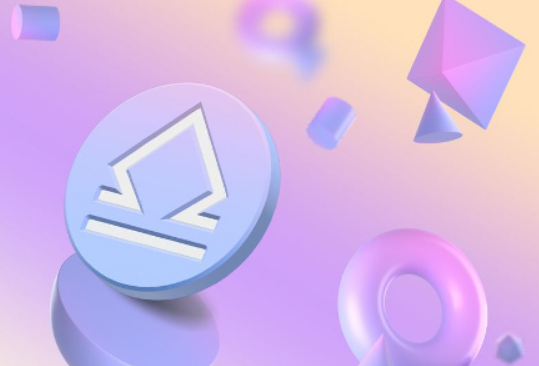
1. Development:Since its establishment, Lybra Finance has gone through many important stages of development. Here are some key events:
April 2023: Lybra Finance’s total value locked (TVL) is approximately $3 million.
The third quarter of 2023: The Lybra Finance team plans to establish a multi-signature wallet, access the LayerZero protocol, deploy it on Arbitrum, deploy lending functions, deploy the entire chain, and explore more composable DeFi.
2. Current situation: As of now, Lybra Finance’s TVL has grown to $236 million. 170 million eUSD have been minted on the platform, with an average collateralization ratio of 1.63 and an average health factor of 1.088. If a 1.5% handling fee is charged, the annual handling fee income of the current agreement is US$2.566 million.
2. Economic model
1. Token distribution: Lybra Finance’s native token is $LBR, with a maximum supply of 100,000,000. $LBR holders can participate in voting and governance while sharing in protocol revenue. Lybra Finance's income comes from a service fee of 1.5% of the total eUSD volume, which will be distributed according to the proportion of LBR holders in the LBR pledge pool.
esLBR is a managed $LBR. The uses of esLBR include:
Governance: Obtain service fee income;
Distributed as rewards to target groups;
Gain access to treasury and agreement revenue distribution.
esLBR exists mainly to reduce selling pressure on $LBR.
2. Currency holding situation: $LBR has a total of 3,400 holders, and 57,157 transactions have occurred. Relatively speaking, the number of holders is small. If the number of holders can be further expanded, the token may rise further.
The top 100 holders of $LBR account for 66.6% of the total number of tokens, which is less concentrated than the tokens of other projects. The top five holder addresses are basically those of centralized exchanges and decentralized exchanges, and the main trading venue of $LBR is Uniswap.
3. Competition
1. Industry overview: LSD refers to the liquid pledged derivatives upgraded by Ethereum Shapella. DeFi built on LSD is LSDfi. The goal of LSDfi is to provide higher yields for LSD. According to Dune dashboard data produced by @hildobby, a total of 23,413,761 ETH are currently pledged, accounting for 19.66% of the total circulation of ETH, with a total value of US$43.78 billion.
The amount of ETH pledged has been growing steadily from 2020 to now. How to revitalize this market worth tens of billions of dollars is an important issue for various LSDfi projects.
2. Comparison of competing products: Gravita: Gravita is an interest-free lending agreement using LSD as collateral, providing users with interest-free loans guaranteed by Liquid Stake tokens and Stability Pool. The loans are issued in the form of stable currency GRAI. GRAI is a token with a volatility suppression mechanism similar to LUSD, generating debt worth up to 90% of the value of user collateral.
Gravita is built on the model of the lending protocol Liquidity Protocol. If the user repays the loan within six months, the interest will be refunded on a pro-rata basis, with the minimum interest being only equivalent to one week's interest. To reduce the volatility of GRAI, GRAI holders are allowed to redeem 1 GRAI with $0.97 worth of collateral, incurring a 3% redemption fee.
Raft.fi
Raft.fi is a stablecoin LSDfi protocol. To use Raft, each Ethereum wallet address needs to open a new position. Each address is only allowed to have 1 position. The wrapped stETH needs to be deposited in the address as collateral to borrow. Out of R. It allows users to deposit stETH to generate stablecoin R.
Raft combines the design features of SAI and LUSD to maintain the stability of R. Users need to hold wstETH in the position, the ratio of collateral to debt must reach at least 120%, and users need to lend at least 3000R.
Raft uses borrowing spreads to maintain the stability of the R price. The borrowing interest rate is the sum of the basic interest rate and the borrowing spread, with an upper limit of 5%. The borrowing fee is the borrowing amount multiplied by the borrowing interest rate, which is paid using the stable currency R. The debt that users need to repay is borrowing and borrowing fees.
There are three ways in which R can be destroyed, namely:
Repayment, the borrower repays the lent R stable currency in Raft and gets back the wstETH collateral;
When users make repayments, they can choose to repay part or all of the R token debt, but the debt balance after repayment cannot be less than 3000R.
1. Development direction of LSDfi
The main development directions of LSDfi are lending, stablecoins and DEX. The top three new projects in LSDfi are Lybra Finance, raft.fi and pendle, accounting for 48.3%, 7.679% and 7.549% respectively. Projects that develop LSDfi in the form of stablecoins currently include Lybra Finance, Raft and Gravita. The stablecoin eUSD minted by Lybra Finance accounts for more than 70% of the LSDfi stablecoin market.
in conclusion
Lybra Finance occupies an important position in the LSDfi field, especially in the stablecoin market, with significant advantages. With the continued efforts of the team and the development of the market, Lybra Finance and its native token $LBR are expected to achieve greater achievements in the future. For investors and users, this is a project worth paying attention to.